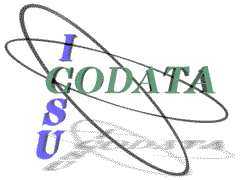Senckenberg Research Institute and Museum, Frankfurt
Botanical Garden and Botanical Museum Berlin-Dahlem
Senckenberg Research Institute and Museum, Frankfurt |
Botanical Garden and Botanical Museum Berlin-Dahlem |
TDWG 2000: Digitising Biological Collections
Taxonomic Databases Working Group, 16th Annual Meeting
Senckenberg Museum, Frankfurt, Germany, November 10-12, 2000
* Environmental Information Management
[Keynote address]
The UK National Biodiversity Network (NBN) Data Model was developed from an analysis, undertaken in 1997-1998, to provide a replacement for the existing Recorder biological records software. The original Recorder software, a DOS program built using Advanced Revelation, did not use a fully relational data model and was principally aimed at species recording. The objective of the analysis was to develop a relational model that would incorporate all forms of biological recording including biotope mapping.
The NBN data model is both modular and extensible. The basic modules include Survey, Locations, Contacts, Sources (References) and dictionaries. The dictionaries include taxa, biotopes and administrative/geographic areas and in their populated form are also NBN standards. New modules (e.g. earth sciences or collections management) can be added to the model and existing modules extended to cover new requirements.
The core of the NBN data model consists of a set of tables relating to locations (bounded areas) and a set of tables relating to observations (records) of taxa and biotopes. Individual biotope or taxon observations are linked within samples (e.g. a list of taxa recorded in a quadrat) which are linked within survey events (e.g. several quadrats on one site in one day) which are linked within surveys (a collection of events with a common purpose). Survey events are usually linked to a location but samples may simply have a spatial reference (e.g. O.S. Grid reference).
Observations (e.g. a taxon occurrence) may have any number of measurements attached to them and the model allows for the addition of new measurement types. Specialist recording, such as bird ringing details, can be accommodated by the addition of new measurement types, new fields or new tables to the core model. Locations can have features to which management aims, threats and damage records can be attached. Features are very flexible and can be used to link observations to specific aims. For instance, a colony of a rare species could be a feature of a location to which both management aims and population monitoring counts can be attached. Actual counts or measurements would be recorded in the Survey Module and linked to the feature.
The dictionary modules do not hold single, definitive lists of terms but collections of lists that can be mapped to each other. For instance, the Biotope Dictionary includes the UK National Vegetation Classification (NVC), a marine habitats classification, a Phase I landcover classification and many others. The Taxon dictionary holds numerous taxonomic and legislative lists and their revisions. The intention is that biological records are always entered using their original determinations (either that given by the recorder or first referee) and that other or later names allocated are stored as redetermination records.
The NBN Data Model was used to define the database in the new Recorder 2000 software, which was released in September 2000. Recorder 2000 is a windows-based biological recording application which utilises NBN standards including the NBN dictionaries and data exchange standard. The database used is Microsoft Access although the three-tier architecture allows for the use of other database 'back-ends'.
The basic installation of Recorder 2000 is able to handle most forms of species and habitat records including those from sample-based surveys such as quadrats and transects. The functionality includes validation, data security (e.g. different user levels and you can't edit other people's records), internal mapping facilities and data import/export that reads and writes data in XML format. The report system is powerful but basic (places for things or things for places) as the intention was that Recorder 2000 would frequently be used with external reporting tools. Reporting tools might include links from Microsoft Office, GIS packages or SQL reporting tools.
Recorder 2000 is a modular application and has menu facilities for loading Add-Ins that extend the applications functionality. Add-Ins can be written for almost any purpose but commonly would change, extend, replace or add forms and reporting programs. Add-ins can access existing modules such as the validation and mapping routines, which offers a rapid and relatively straightforward means of extending Recorder to cover new types of data.
Details of Recorder and NBN standards including the NBN Data Model can be found on the NBN website at www.nbn.org.uk
TDWG | Participants | Presentations | Senckenberg Museum | BGBM Biodiversity Informatics
|
This meeting was co-sponsored by the Committee on Data for Science and Technology (CODATA) |
 |
Page editor: W. Berendsohn, wgb@zedat.fu-berlin.de. © BGBM 2000.